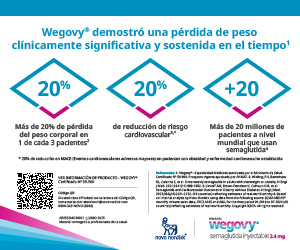Insulin signaling and physical activity in skeletal muscle
Keywords:
insulin signaling, diabetesAbstract
Skeletal muscle is vital for regulating blood glucose, increasing the incorporation of glucose both through insulin and through physical activity. The increase in insulin causes the activation of its receptor, triggering an important signaling cascade in which modulators such as IRS, PI3K, Akt, AS160 (TBC1D4), Rac-1, actin remodeling, etc. intervene. Regarding the activation triggered by physical exercise, the signaling pathways elucidated so far have proven to be essential in this process. Among the most studied pathways we find: the activation of 5ʹ AMP-activated protein kinase (AMPK), the increase in calcium and the activation of calcium sensor proteins (CaMKK, CaMKII and nPKC), which in turn modify its state of phosphorylation after exercise, and a series of stretch-sensitive proteins that allow the activation of Rac1, PAK, actin remodeling, etc. Thus, both stimuli (insulin and physical activity) increase glucose transport thanks to the activation of two essential processes: the trafficking of GLUT4 transport vesicles and their fusion with the plasma membrane. Vesicle trafficking requires Rabs proteins (Rab8 and Rab13), while membrane fusion requires the participation of proteins capable of fusing the vesicle and plasma membranes, and SNAREs (Syntaxin4, SNAP23 and VAMP2). Finally, these events allow the increase of GLUT4 on the cell surface, which enables glucose uptake and a decrease in blood glucose.
References
I. Richter EA, et al. Interactions between insulin and exercise. Bioch J 2021;478(21). doi: 10.1042/BCJ20210185
II. Jaldin-Fincati JR, Pavarotti M, et al. Update on GLUT4 vesicle traffic: a cornerstone of insulin action. Trends Endoc Metabol 2017. Doi: 10.1016/j.tem.2017.05.002.
III. Pavarotti MA, Rodríguez M. Cascada de señalización de la insulina y la actividad física para el transporte de GLUT-4 y la captación de glucosa en el músculo esquelético. Rev Soc Arg Diab 2023;57(3).
IV. Sylow L, Tokarz VL, et al. The many actions of insulin in skeletal muscle, the paramount tissue determining glycemia. Cell Metab 2021. doi: 10.1016/j.cmet.2021.03.020.
Downloads
Published
Issue
Section
License
Copyright (c) 2024 on behalf of the authors. Reproduction rights: Argentine Society of Diabetes

This work is licensed under a Creative Commons Attribution-NonCommercial-NoDerivatives 4.0 International License.
Dirección Nacional de Derecho de Autor, Exp. N° 5.333.129. Instituto Nacional de la Propiedad Industrial, Marca «Revista de la Sociedad Argentina de Diabetes - Asociación Civil» N° de concesión 2.605.405 y N° de disposición 1.404/13.
La Revista de la SAD está licenciada bajo Licencia Creative Commons Atribución – No Comercial – Sin Obra Derivada 4.0 Internacional.
Por otra parte, la Revista SAD permite que los autores mantengan los derechos de autor sin restricciones.




























